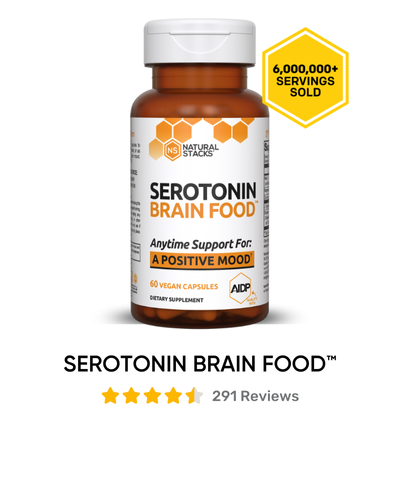NEUROFEEDBACK THERAPY: A BREAKTHROUGH TREATMENT OR JUST A FAD?

Neurofeedback has quickly become a popular therapy method for treating conditions like ADHD and anxiety.
It has even been used to help people quit smoking and stop drinking alcohol!
For a long time I have been curious about this new treatment and the science behind neurofeedback training.
In this article I will talk about what it is, how it works, and what the science has to say about this controversial subject.
WHAT IS NEUROFEEDBACK AND WHAT ARE THE BENEFITS?
Neurofeedback is a treatment method that uses EEG (electroencephalography) waves to treat or train the brain to function better.
It’s theorized that better brain function can lead to improved behavior patterns.
Here’s an example:
Let’s pretend you want stop getting anxiety from public speaking.
Currently when you have a big meeting coming up the brain is sending all kinds of signals all over your body.
It’s telling you….
“This is going to be awful” and “It’s time to panic!”
You know the feeling right?
This is considered an overstimulation.
Public speaking might feel bad, but not so bad where your brain is freaking out and anxiety starts to kick in!
Neurofeedback is designed to train your brain and get it back to a normal function where it would not be “overstimulated” or "under stimulated" before an event or situation.
Related: How Neurofeedback Technology Can Make You Smarter and Happier
HOW DOES NEUROFEEDBACK WORK?

This therapy was developed in the 1960s, but only recently has EEG technology become sophisticated enough to warrant widespread use and really capture the public's imagination.
The Neurofeedback Machines used today include:
- Headgear to measure your brainwaves
- Earbuds for music or other sounds
The trainer or health professional will work through the exercise with you and a session usually goes for about thirty minutes.
There’s no shocking of the brain or electrodes or anything crazy like that happening.
That’s why neurofeedback is usually quite an enjoyable experience.
SO WHAT’S ACTUALLY HAPPENING DURING THE THERAPY?
The neurofeedback trainer will send feedback to the brain depending on the brainwave patterns that are occurring.
The feedback is usually small signals like skips in the music.
What happens next is the brain is forced to “reset” and go back to the baseline.
The good behavior is reinforced and according to some experts, can making a lasting impact on how well your brain performs during tasks.
Related: How To Take GABA Supplements For More Restful Sleep
WHAT YOU NEED TO KNOW BEFORE STARTING NEUROFEEDBACK THERAPY
1.) IT’S NOT A CURE OF ANY KIND
Neurofeedback is not going to cure anything on its own.
It’s supposed to be used as just one part of an overall treatment plan.
Do not go into it thinking that the brain training is going to work instantly and that you’ll be cured of your issue the moment you walk out.
This is not the case and if the clinic is selling this idea to you, it's best to find an alternative.
2.) WE NEED MORE CLINICAL DATA
Yes, neurofeedback is very encouraging.
There have been initial studies using it to treat the following issues:
- Attachment disorders
- Depression
- Dyslexia
- Learning disorders
- Migraines
- OCD
- ADHD
Many of the studies I found showed a lot of promise.
For example: a double blind trial testing neurofeedback for children with ADHD found:
Superiority of the combined NF training indicates clinical efficacy of NF in children with ADHD. Future studies should further address the specificity of effects and how to optimise the benefit of NF as treatment module for ADHD. [1]
The bad part here is the kids ages . 8 - 13, went through a total of 36 neurofeedback sessions.
This brings me to my next point.
3.) THE COST OF NEUROFEEDBACK
Neurofeedback is expensive and time consuming.
Those 36 sessions administered to the children would have cost upwards of $4,000.
You have to also consider the time of each session, traveling back and fourth, etc.
Also, neurofeedback is not covered by any of the major insurance policies.
You will have to pay out of pocket.
Studies show that multiple sessions are required, just a couple will not do much.
4.) NEUROFEEDBACK IS SAFE
The professional EEG machines today like NeurOptimal only measure brain wave output.
As I mentioned earlier, they’re not “shooting” or “electrocuting” the brain.
This makes them safe to use.
5.) THE MUSE HEADBAND IS ANOTHER OPTION
The Muse Headband is the first portable neurofeedback machine that connects right to your smart phone.
In just three minutes per day they promise to help you alleviate symptoms of anxiety and stress.
But does it work?
Reviews of the Muse headband are actually very positive with some people stating that it's even changed their lives.
It can be difficult to distinguish the facts from marketing, but given that the product comes with a full money back guarantee it's a lot easy to start with a Muse than to enroll multiple (20+) therapy sessions.
Related: 11 Proven Ways To Generate More Brain Cells, Improve Memory, and Boost Mood
CLOSING REMARKS
Neurofeedback is a promising elective treatment for many different brain problems.
We’ll still need to see more positive neurofeedback reviews from clinical journals before I can make a strong recommendation.
However due to its safety and relative ease if you think it could benefit you, it’s worth a try.
Just remember the high cost and amount of time you will have to commit.
And like any other new type of treatment, it’s important to talk with your licensed healthcare practitioner before starting.
-
What do you guys think about neurofeedback? Worth it or just a fad?
- Gevensleben, Holger, et al. "Is neurofeedback an efficacious treatment for ADHD? A randomised controlled clinical trial." Journal of Child Psychology and Psychiatry 50.7 (2009): 780-789.










